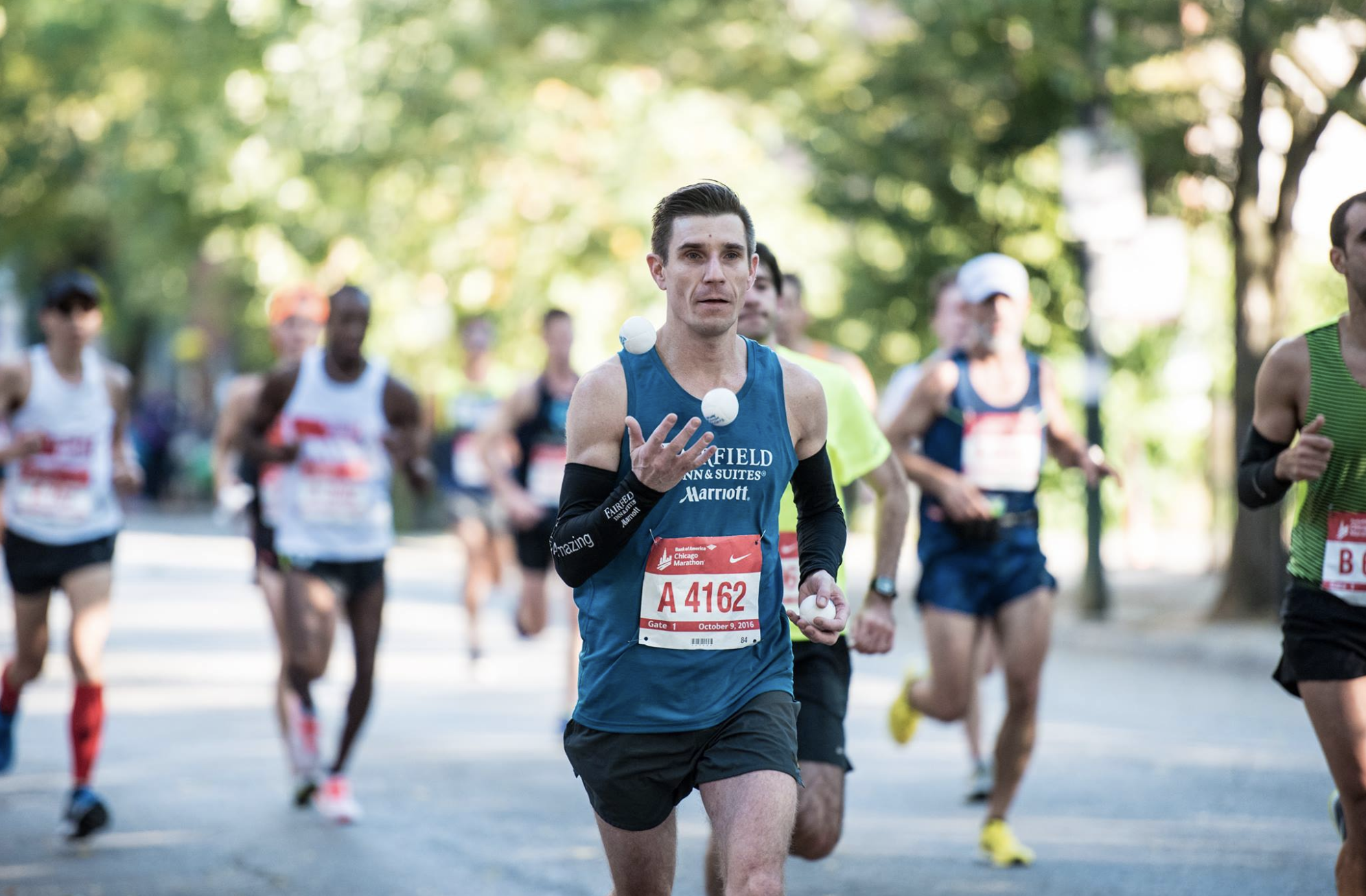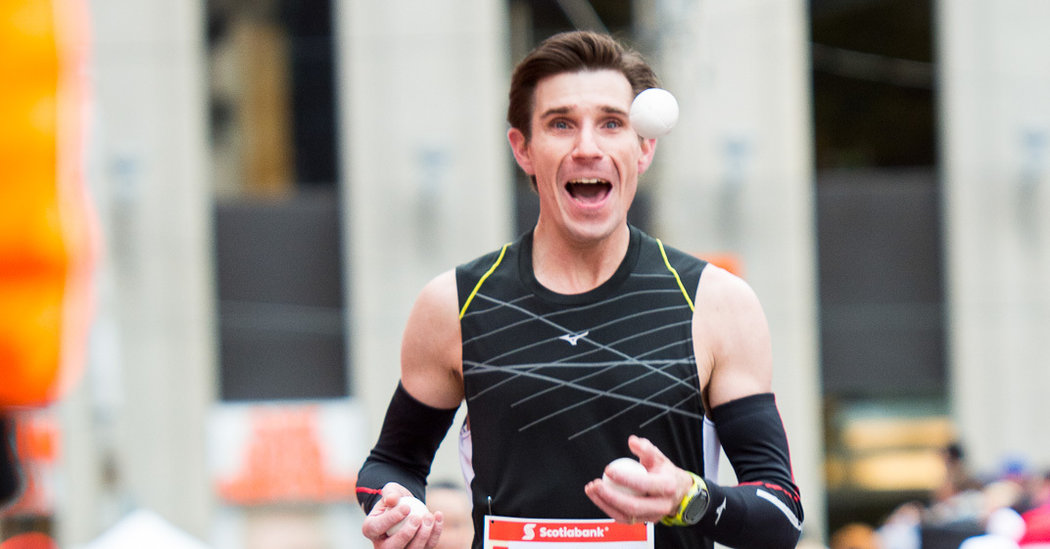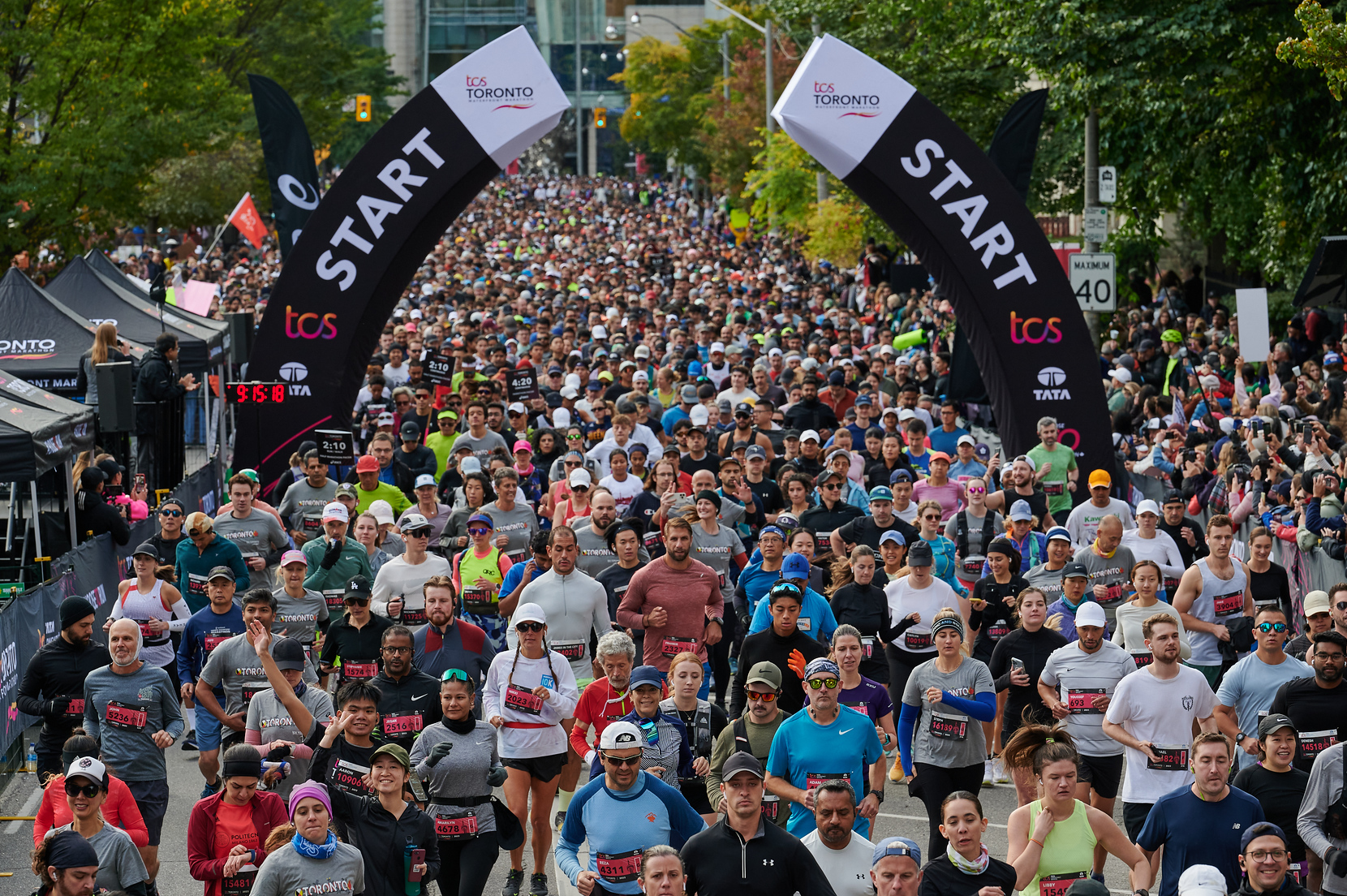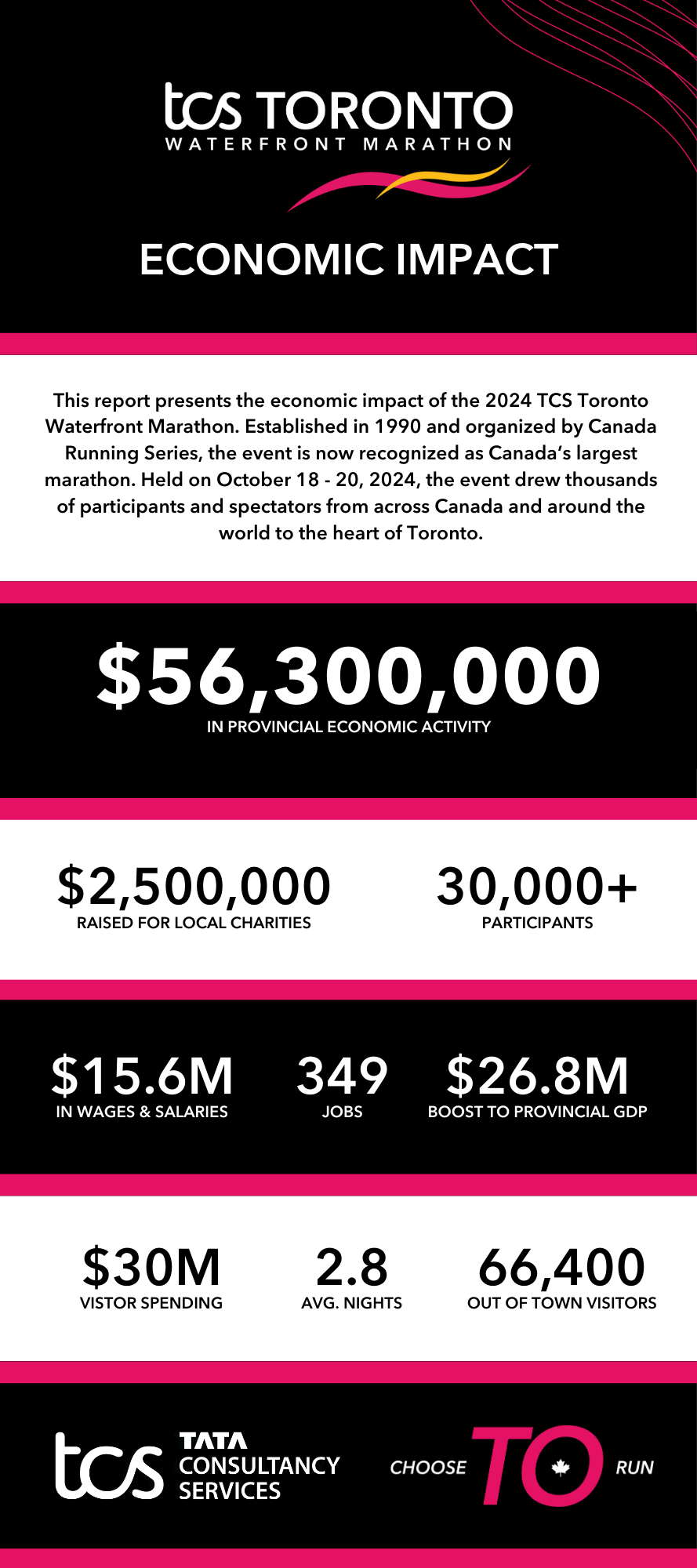
By Ravi Singh
The Kid
There are lots of ways to process the magnitude of the marathon. Of course, there’s the official distance of 42.195km. That’s roughly 105 laps around a standard track. Various forums across the internet place the step count at anywhere between 30,000 to 50,000 steps.
At the 2017 Scotiabank Toronto Waterfront Marathon, local runner Michal Kapral also had to factor in approximately 130,000 tosses and catches. In support of the Sick Kids Foundation, Kapral went after the Guinness World Record for the fastest marathon run while juggling five balls.
“I do serious things in my life, but I like to keep that kid inside me alive.”
Kapral had luck at STWM in the past. In 2004, he set the record for fastest marathon run while pushing a stroller (2:49:43), which he followed up with the joggling world record the next year with a time of 3:01:41. He’d subsequently best his own record, including with a 2:50:12 at STWM 2007, which still stands as the joggling marathon record.
To those who might ask Kapral the basic question of “Why?” his response would be, “I’ve always liked to do things that are different and that’s followed me most of my life. I don’t really like to grow up. I do serious things in my life, but I like to keep that kid inside me alive.”
Dropping the Ball
In all previous attempts, Kapral juggled three balls, which he insists is actually quite intuitive and gels well with the mechanics of running. In 2016, he even joggled the entire Chicago Marathon in 2:55 without dropping a single ball.
From the very beginning, however, Kapral says there were signs that he was approaching his “Icarus moment” with the 5-ball attempt. Before his marathon attempt, the longest recognized joggling world record was 5K, set my Matthew Feldman 2011.
“There was definitely a high chance of failure, but I felt I had a 50/50 shot at the record.”
“I knew there were going to be drops, but I thought I could get to the point where I could comfortably run 400m without dropping any balls,” Kapral explains, but adds, “I was lucky if I could even get to 100.” Add to that the fact that most of his training was done on a quiet street near his home or around a track.
With no shorter races under his belt and an admittedly rough training cycle, Kapral still felt, “There was definitely a high chance of failure, but I felt I had a 50/50 shot at the record.”
At the start, Kapral recalls, “I was in an absolute panic. I tried to stay at the front of the slowest corral, but a few runners shimmied in front of me and I was squished right in. I never had that experience while training.” In a race with thousands of others, the 5-ball pattern also acted as a visual obstruction.
From there, it only got worse, almost comically so. Kapral recounts, “Around 2K into the race, I pulled a muscle in my hand, which has never happened. It started as a tweak and then got progressively worse.” The second 5K of the race took Kapral 56 minutes.
 Joggler Out
Joggler Out
Then the cameras from the race’s online broadcast arrived. It’s one thing to be suffering on the course in front of spectators, but quite another in front of a global audience. The cameras lingered on Kapral at the 16K mark, capturing drop after drop after drop, each one requiring him to step back to the drop point and start again. He eventually puts both hands on his waist and looks down at the ground, clearly crestfallen. At this point, he had been running and juggling for nearly four hours.
At 17K, Kapral had enough. At the insistence of pacer Zach Warren, a fellow joggler and former world record holder, the pair were still going to finish the marathon as regular runners within the six hour limit. That required them to negative split the race by two hours.
“The crowd kept me going and later in the race there were few spectators. The crowd was essentially the volunteers and they were just incredible as well as the other runners,” Kapral remembers. Together, he and Warren came in just under the six hour limit. “I would have loved to come into the finish breaking a record, but at that point I was just another runner and it still felt great,” Kapral concludes.
Laugh It Off
The man who has won races and runs marathons significantly faster than the average runner while juggling barely avoided finishing dead last that day.
In 2017, STWM was a debacle, but it’s also been the site of Kapral’s greatest victories and he acknowledges both as special. Even if the 5-ball record wasn’t meant to be, Kapral says he wouldn’t trade the experience of branching out of his comfort zone.
“It’s a matter of committing to a goal you set out no matter how crazy it might seem.”
“You often wonder why you’re doing certain things and why you can’t just be a normal runner, so I contemplated that a good bit as I trained,” Kapral says. He concluded, however, “It’s a matter of committing to a goal you set out no matter how crazy it might seem. I loved the training even if it was frustrating and I didn’t get as good as I expected, it was a ton of fun.”
Zach Warren, Kapral’s pacer in 2017, has studied laughter as part of his PhD, and Kapral says he’s very much into making people smile, an endeavour at which he succeeds on every run.
That’s perhaps the element of play that’s central to Kapral’s whole joggler persona. Like a child first learning to kick or throw a ball, the process itself is as amusing as anything and brings as much joy as mastering the skill. That’s the marathon–a place where adults can still play. If Kapral were to worry about embarrassment or perfection, that would mean growing up. Like a kid, perhaps he’ll also never learn. Kapral is currently chasing a 5-ball record at the 10K.






